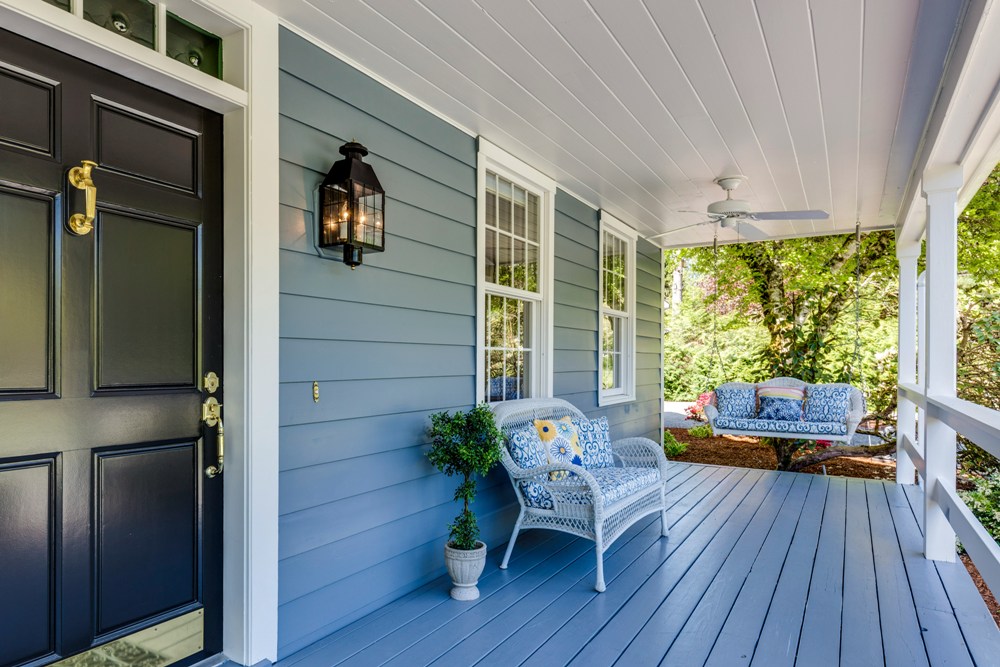
Maintaining residential property goes far beyond reacting to breakdowns or visible deterioration. A well-maintained home reflects the foresight of its owner, speaks to the pride of its occupants, and stands as a reliable investment over time. Regular upkeep ensures not only the safety and functionality of a house but also contributes to its aesthetic appeal and financial worth. From managing seasonal shifts to monitoring unseen systems like plumbing and HVAC, the considerations are multifaceted. Whether preserving an aging family home or ensuring a newly purchased property remains in optimal shape, deliberate maintenance practices help prevent small issues from escalating into significant financial burdens. What follows are thoughtful strategies that promote both structural integrity and long-term livability, providing guidance for homeowners who value longevity and craftsmanship within their living space.
Inspecting the Foundation and Drainage Patterns
Understanding the underlying stability of a residence begins with evaluating its foundation and water management systems. Cracks in concrete, bowing basement walls, or shifts in door alignment may suggest soil movement or drainage inefficiencies around the perimeter. Seasonal rainfall, particularly in areas prone to heavy storms or variable moisture levels, can lead to pooling near the base of the home if gutters and downspouts are not directing water far enough from the structure. Keeping soil sloped away from the house, regularly clearing gutter systems of debris, and installing extensions on downspouts can dramatically reduce the risk of long-term water damage. Preventing erosion near the foundation not only preserves the home's structural stability but also helps avoid secondary problems such as mold growth, musty odors, and pest infestations that thrive in damp, unmonitored spaces. In warmer, humid climates, these conditions are especially conducive to pests like cockroaches, rodents, and termites, which can quickly establish themselves if left unaddressed. Therefore, enlisting the help of a professional Miami Pest Control service (or similar providers elsewhere) can ensure early detection and prevention, keeping the home protected from damage caused by unwanted intruders.
Maintaining the lawn or yard is just as important as caring for the home itself. Overgrown grass, compacted soil, or neglected landscaping can all contribute to poor drainage, which eventually puts pressure on the foundation. A well-kept yard not only improves curb appeal but also supports healthy soil and proper water absorption. This is where sprinkler systems come into play. By ensuring that the lawn receives consistent, balanced watering, sprinklers help prevent dry patches, erosion, and water pooling that might otherwise harm both the yard and the home's base. For homeowners experiencing issues such as uneven watering, leaks, or malfunctioning heads, searching for sprinkler repair near me
can provide quick solutions that keep both the landscape and the property's structure in top condition.
Preserving Roof Integrity and Attic Ventilation
The roof serves as the primary barrier between a home's interior and the elements. Inspecting it routinely for missing shingles, lifting edges, rusted flashing, and granule loss helps prevent water intrusion and subsequent damage to ceilings, insulation, and support beams. It is equally important to evaluate the attic space beneath the roofline. Poor ventilation can lead to heat buildup in summer or condensation in winter, both of which can compromise insulation and promote wood rot. Ensuring that soffit vents are unobstructed and that ridge or gable vents are functioning allows moisture and heat to escape effectively. In regions experiencing dramatic temperature fluctuations, ice damming along the eaves can also pose a threat; proper attic airflow and insulation help mitigate this risk. Regularly monitoring roofing materials and attic conditions supports a home's long-term resilience while preserving energy efficiency and comfort.
Protecting Exterior Surfaces and Paint
The visible exterior of a home communicates both character and condition. Wood siding, stucco, or brick all benefit from tailored maintenance approaches that preserve their appearance while protecting underlying structures. Peeling paint, chalky finishes, or warped materials indicate that surfaces may be overdue for refinishing. Washing exterior walls annually removes pollutants, pollen, and mildew, while caulking gaps between windows, doors, and trim keeps moisture and insects from penetrating vulnerable areas. Paint is not only decorative; it acts as a sealant and protective coating. Choosing high-quality, weather-resistant paint and applying it under appropriate conditions extends its lifespan and maintains a crisp, finished look. Prioritizing exterior upkeep reflects the homeowner's attentiveness and guards against issues that often begin with visual neglect and lead to deeper deterioration.
Maintaining Plumbing and Water Fixtures
Water management inside the home involves more than avoiding leaks; it also requires safeguarding infrastructure against long-term corrosion, mineral buildup, and hidden failures. Inspecting under sinks for moisture, staining, or musty smells can reveal slow leaks that might otherwise go unnoticed. Replacing failing washers, resealing pipe joints, and insulating exposed pipes in colder climates helps prevent sudden ruptures or water loss. In older homes, galvanized pipes may need replacing due to reduced water pressure or contamination concerns. Hot water heaters should be drained annually to remove sediment that reduces efficiency. Likewise, checking water pressure regulators and backflow devices ensures water flows smoothly without risk of contamination. Plumbing systems require both proactive attention and responsive care to preserve reliability and prevent structural damage from unchecked moisture.
Monitoring HVAC Systems and Air Quality
Heating, ventilation, and air conditioning systems must operate efficiently year-round to support both health and comfort. Seasonal servicing by qualified technicians can reveal problematic issues such as refrigerant leaks, dirty coils, or worn belts that reduce the system's efficiency and lifespan. Replacing outdated components with quality parts like Voomi compressors can also improve HVAC performance and reduce energy consumption over time. Changing air filters frequently ensures clean airflow and reduces strain on components. Attention should also be paid to ductwork for signs of leakage, dust buildup, or microbial growth. Homes equipped with programmable thermostats benefit from consistent temperatures and reduced energy usage when settings align with occupancy patterns. Furnace components, in particular, should be inspected for signs of wear or malfunction before the colder months, as a delay in furnace repair could result in heating failure during peak use. Moreover, the integration of dehumidifiers or air purifiers may enhance indoor air quality, particularly in households with allergies or respiratory conditions. Maintaining HVAC systems goes beyond comfort; it ensures that air circulated throughout the home remains healthy, balanced, and cost-effective to control.
Preserving Landscaping and Tree Management
Well-maintained landscaping enhances curb appeal while supporting the structural and environmental health of a property. Overgrown trees may seem picturesque but can pose significant hazards if limbs hang near roofs, power lines, or chimneys. Root systems from large trees can also threaten underground pipes or compromise foundations if planted too close to the structure. Pruning and thinning promote healthy growth and reduce wind resistance during storms. Meanwhile, maintaining lawn drainage with French drains or swales protects against water pooling around the home's perimeter. Shrubs and plantings should be kept away from siding and vents to avoid moisture buildup or rodent shelter. Landscaping maintenance is not merely cosmetic; it is a functional extension of home preservation, balancing beauty with practicality and foresight.
Inspecting Doors, Windows, and Weatherproofing
Energy efficiency, comfort, and security all hinge on the condition of a home's doors and windows. Over time, seals degrade, frames warp, and glass may develop leaks that allow drafts, moisture, or noise to enter. Regular inspection ensures that locks function properly, weatherstripping remains intact, and caulk lines show no gaps. Fogged double-pane windows may indicate failed seals, requiring replacement to restore insulating properties. During winter, poorly sealed windows often create cold zones near glass, while in summer, inefficient windows can overheat rooms and burden HVAC systems. Upgrading to insulated or low-emissivity glass enhances performance and lowers utility costs. Maintenance of these critical components not only improves daily living conditions but also strengthens the home's envelope against environmental exposure. Homeowners and landlords who manage multiple maintenance responsibilities often find value in partnering with a local services team to coordinate seasonal servicing, and rapid emergency responses. In Jupiter's market, a nearby manager can streamline vendor selection, verify licensed contractors, and keep comprehensive maintenance records that protect both tenant health and long-term asset value. Working with a dedicated Property Management Jupiter provider also helps reduce downtime after failures by scheduling preventative checks and handling tenant communications on the owner's behalf. This practical approach preserves occupant comfort while limiting the higher costs associated with reactive repairs.
Cleaning and Sealing Driveways and Walkways
Exterior hardscapes often show the first signs of weathering but can be overlooked in routine maintenance schedules. Concrete, asphalt, and paver surfaces are vulnerable to cracking, shifting, and staining over time, particularly in climates with freeze-thaw cycles or heavy rainfall. Sealing driveways and walkways protects surfaces from water penetration, oil damage, and moss growth. Pressure washing removes grime, mold, and discoloration, instantly refreshing appearance and enhancing safety by reducing slippery buildup. Checking for uneven segments or lifting edges helps prevent trip hazards and allows for timely leveling. Investing in the upkeep of exterior surfaces contributes not only to curb appeal but also to safety and accessibility around the property.
Securing Electrical Systems and Lighting
Modern homes depend heavily on reliable electrical systems to power everything from daily appliances to digital infrastructure. Outdated wiring, overloaded circuits, or damaged outlets present fire hazards and should be addressed by licensed professionals. Ground fault circuit interrupters (GFCIs) in kitchens, bathrooms, and outdoor areas should be tested regularly to confirm they offer proper protection. Light fixtures, both indoor and out, should be kept free of dust and cobwebs, with bulbs replaced promptly to ensure consistent illumination and security. Motion sensor lights along entryways and garages enhance safety while conserving energy. Electrical maintenance is a foundational component of property stewardship, supporting everything from convenience to occupant safety with routine observation and care.
Organizing Interior Spaces and Storage Areas
Beyond mechanical systems and structures, the interior environment benefits greatly from intentional organization and storage management. Overfilled closets, cluttered attics, and poorly ventilated basements create breeding grounds for pests and obscure developing issues such as leaks, mold, or structural shifts. Regularly rotating stored items, labeling boxes, and utilizing moisture absorbers or dehumidifiers in enclosed spaces helps maintain air quality and visibility. Ensuring that stored materials do not press against walls or vents allows for better airflow and simplifies inspection routines. Tidy, well-organized spaces invite mindfulness about the property's evolving needs and allow owners to respond swiftly to emerging maintenance concerns without delay or obstruction.
Residential property ownership involves more than acquiring shelter; it demands a relationship of care, observation, and timely action. Each element of a home, from its rooftop shingles to its underground pipes, responds to the passage of time, changing seasons, and human activity. Diligent homeowners recognize that regular maintenance not only extends the life of components but also enhances daily enjoyment and long-term financial health. By viewing a house as a living system that thrives under consistent attention, property owners invest in peace of mind, comfort, and value. Ultimately, those who treat maintenance as a proactive, informed responsibility preserve not just a building, but the quality of life within it.
EDITORIAL POLICY
The Flash List is dedicated to providing trustworthy editorial content by maintaining strict ethical standards, journalistic integrity, and credible professionalism regardless of any remuneration as working media. The Flash List is not affiliated with third-party companies mentioned and makes no endorsement or guarantee expressed or implied. The preceding article, which contains affiliated link(s) for which compensation was received, is intended for informational reference only and does not constitute advice of any kind. Moreover, a qualified professional should be consulted regarding any lifestyle consideration, medical treatment, or monetary transaction, etc. Content is published in accordance with USFTC regulations and terms and conditions.
MORE ON THE FLASH LIST
































